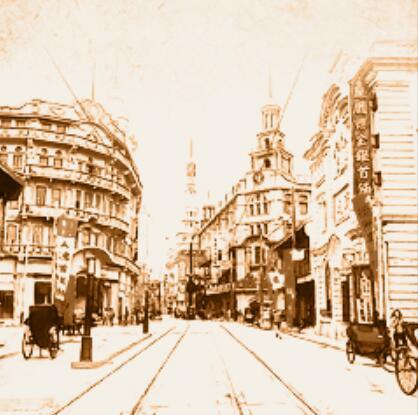Jing’an District is named after the historical Jing’an Temple in the region. The part of today’s Jing’an to the north of Wusong River (ancient watercourse) once was governed by Kunshan County until 1217, the tenth year of the Jiading Era in the Southern Song Dynasty, and later by Jiading County and Baoshan County. And the part to the south of Wusong River was governed by Huating County until 1291, the 28th year of the Zhiyuan Era in the Yuan Dynasty, and by Shanghai County later and throughout the Ming and Qing dynasties. Qiujiang River once was the boundary river between Shanghai County and Baoshan County, but in the early years of the Republic of China it was filled up for road construction. In 1863, the second year of the Tongzhi Era in the Qing Dynasty, the central and southern part of today’s Jing’an District was used as an American concession and later was merged into the Shanghai International Settlement. In 1899, the 25th year of the Guangxu reign, the southern part of today’s Jing’an was largely merged into the western area of the Shanghai International Settlement. In 1900, the 26th year of the Guangxu reign, to resist the expansion of concession, gentry-merchants in Zhabei established Zhabei Engineering Administration and opened commercial ports. In 1914, the French concession expanded with the merger of the regions south of Changbang Road (Middle Yan’an Road) and Xujiahui Road (Huashan Road). At that time, the southern part of today’s Jing’an belonged to the French concession and Shanghai International Settlement, while the northern part was mainly Chinese-controlled. In July 1927, the Shanghai Special Municipal Government took over 17 cities and townships which one year later were all renamed as districts, including the former Zhabei City. In the 1930s, the Empire of Japan launched two major operations against Shanghai (the Shanghai War of 1932 and the Battle of Shanghai in 1937) which almost ruined Zhabei, then a well-known shanty town of the city. In 1937, during the fall of Shanghai, the Japanese puppet regime transferred the management of Zhabei District to the Administration Department of Zhabei and then to the Administrative Office of North Shanghai. Before the outbreak of the Pacific War, Shanghai International Settlement became an “isolated island.” By the victory over Japan in 1945, the regions of today’s Jing’an were partly and respectively affiliated to the 10th, the 11th, the 12th, the 14th and the 15th District. In 1947, the 14th District was renamed as Zhabei District and the 15th District as Beizhan District. On May 30, 1949, the Shanghai Municipal Military Control Commission took over Jing’an District and later renamed it as Jing’an Temple District. On June 28, 1950, the name of Jing’an District was put into use again. In the early years of the People’s Republic of China, the regions of today’s Jing’an fell under the respective jurisdiction of then districts of Jing’an, Xincheng, Jiangning, Zhabei and Beizhan. In 1956, the municipal government of Shanghai made changes to administrative divisions, merging Beizhan District into Zhabei District, and repealing Jing’an District and splitting it into two parts; the part east of Fumin Road and Changde Road was merged into Xincheng and the west part into Changning. In January 1960, the administrative divisions were adjusted again with the repeal of Xincheng and Jiangning, and the new establishment of Jing’an District which consisted of the region of Xincheng west of North Chengdu Road, the whole Jiangning, and the region of Changning east of Zhenning Road. In November 2015, the CPC Shanghai Municipal Committee and Shanghai Municipal People’s Government issued the Reply of the State Council on the Regional Adjustment of Administrative Divisions of Shanghai City, a document on the merger of Jing’an and Zhabei. In March 2016, the merger was completed, marking the consolidation of the new Jing’an District.
The full edition of the report is available at Xinhua Silk Road Database. You can click the “Table of Content” to have a general understanding of it.
Click on the button below to create your account and get immediate access to thousands of articles.




 A single purchase
A single purchase









